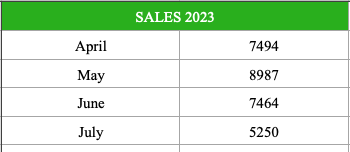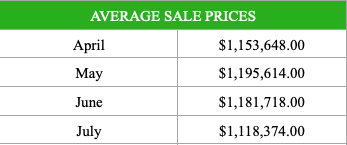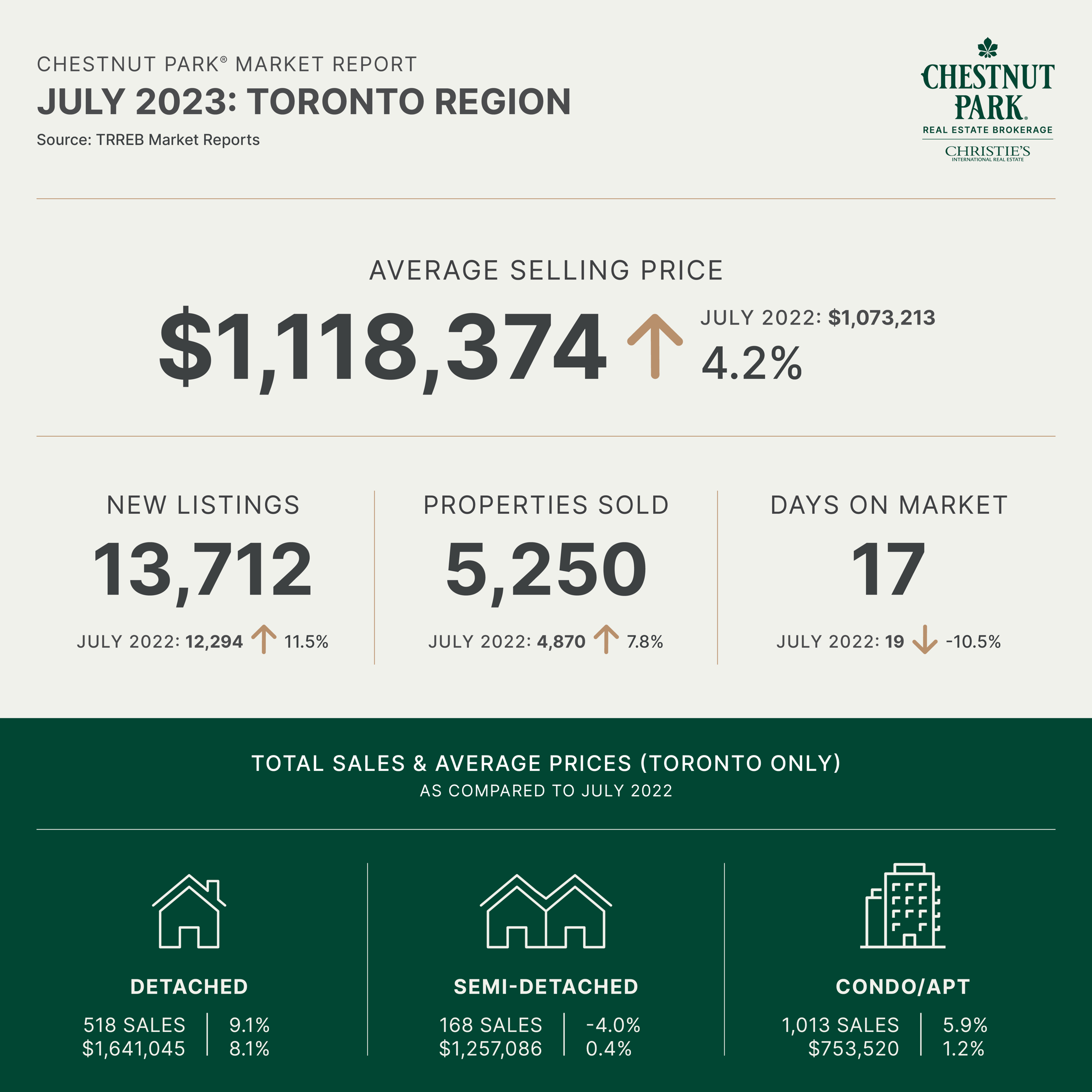On a year-over-year basis, July’s residential resale market results were quite favourable. The 5,250 sales reported were almost 8 percent higher than the 4,870 properties reported sold last July. The average sale price for all properties sold came in at $1,118,374, a 4.2 percent improvement compared to the average sale price of $1,073,213 achieved in July last year. Even days-on-market improved by 10.5 percent, from 19 to 17 days this July.
However, by July 2022, the Bank of Canada had implemented 4 increases taking the benchmark rate from 0.25 percent to 2.50 in only four months. Although more rate hikes were on their way, by July of last year the resale landscape had changed dramatically and negatively. Sales were grinding to a halt and the average sale price was plummeting. In February of 2022, the average sale price was $1,334,000, and by July the average price had declined to $1,073,000. The decline in sales was even more dramatic in March 2022, where 10,861 homes were reported sold, and by July that number had declined to 4,870, a shocking 55 percent.
The real story is what has happened to the resale market since May of this year when, in its wisdom, the Bank of Canada once again decided to increase its benchmark rate. Having increased its rate 8 times since March of 2022, it raised its rate both in June (0.25 percent) and in July (another 0.25 percent), bringing the benchmark rate to 5 percent - the highest it has been in more than 20 years. As sales and average sale prices declined through the second half of 2022, sales and average sale prices have declined since the Bank of Canada has begun to increase rates once again in June and July of 2023, an unsettling similarity to what happened in 2022.


The decline in reported sales since May is 42 percent, with a decline of 30 percent when July sales are compared to those of June of this year. These results unequivocally indicate how powerful the impact of Federal monetary policy is on the real estate market. Interestingly, the decline in average sale prices, which has also taken place, is not nearly as dramatic as the decline in sales. Compared to a 42 percent decline in sales, the 3 percent decline in average sale prices is negligible.
Ironically, the decline in reported sales and average sale prices is not an indication of a weak market. Rather, it reflects affordability, or stated more accurately, the lack of affordability. Each rate hike that the Bank of Canada implements makes it that much harder for buyers and in many instances removes them from the market. Those buyers that have the financial ability are still engaged and continue to drive the market in ways that appear to be incongruous with sales and average sale price numbers.
In July, all 5,250 properties reported sold were contracted after only 17 days on market (on average), while all properties sold for 102 percent of their asking price. In the City of Toronto, properties sold for 103 percent of their asking price. Detached properties in the City of Toronto, which had an average sale price of $1,641,000, sold at 102 percent of their asking price, whereas semi- detached properties ($1,257,000) sold for 108 percent of their asking price. In Toronto’s eastern districts, semi- detached properties sold for an eye-popping 113 percent of their asking price and in only 11 days. These numbers reflect a market that is extremely robust. Unfortunately, because of a lack of affordability generated by the Bank of Canada, some buyers simply can’t participate in it.
If these conditions persist – that is if the Bank of Canada continues to implement further increases to its benchmark rate – there is likely to be further compression of average sale prices. To date, the market has seen no forced or panic selling by homeowners. If high rates persist deep into 2024, more properties will come to market as homeowners are forced to deal with the prevailing high mortgage interest rates on the renewal of their mortgage. There is some, though scant, evidence that this may have happened in July where 13,412 new properties came to market, 11.5 percent higher than the 12,294 that came to market in July of 2022. At the beginning of August, there were 15,371 homes available to buyers, slightly more than the 15,329 available last year. The significance of this 0.3 percent increase is that it is the first positive variance, year-over-year, that we have seen since the beginning of the pandemic.
As we move into August and the second half of 2023, current market conditions will persist unless the Bank of Canada weighs in and either increases or decreases its benchmark rate. Considering that Canada’s Consumer Price Index was only 2.8 percent in June, following a 3.4 percent increase in May, and with the economy showing signs of weakness, it is unlikely (we hope) that the Bank will implement any new increases. That means that those buyers that have the financial ability to engage in this market will continue to do so but in fewer numbers. If more properties come to market, we will see increased pressure on average prices, as buyers have, for the first time in years, more choice.



Comments:
Post Your Comment: